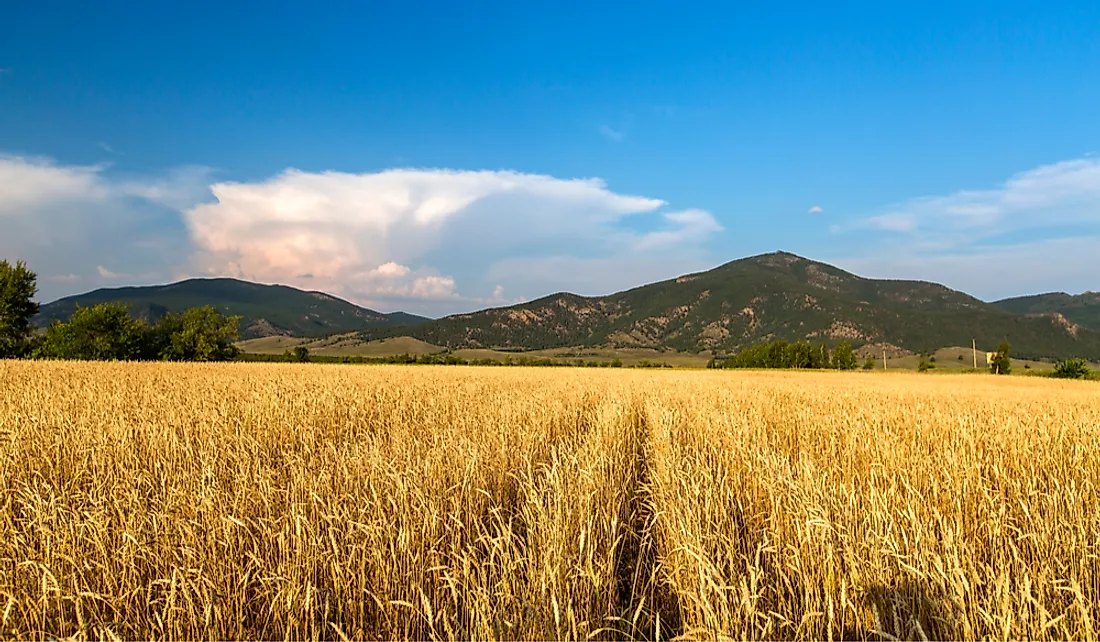What Are The Biggest Industries In Kazakhstan?

Kazakhstan is the largest landlocked country in the world, covering an area of approximately 1.05 million square miles, making it the world’s 9th largest country. Given its population of approximately 18 million people, it is one of the least densely populated countries with less than 15 people per square mile. Kazakhstan was the last Soviet republic to declare independence from the Soviet Union in 1991. Kazakhstan is an economic force in Central Asia, accounting for about 60% of the region’s GDP. It has vast reserves of oil, natural gas, and minerals, as well as considerably large agricultural land. Although the collapse of the Soviet Union resulted in a sharp decline of the economy, several government reforms in 1995-1997 resulted in a period of positive growth. The economy grew to 9.6% in 2000, up from 1.7% the previous year. The growth resulted from the increased prices in the world market for the country’s leading export such as grain, metal, and oil. Kazakhstan was classified as an upper-middle-income economy in 2015 by the World Bank, having recorded a GDP per capita of almost $10,500. The country’s industrial sector is one of the major contributors to the economy, accounting for 34.1% of Kazakhstan’s GDP. Other industries include oil and gas, mining, agriculture, and the service industry.
Oil and Gas
Oil and gas is the leading and most important sector of the economy of Kazakhstan. The country has an estimated 30 billion barrels of oil reserves and 39 trillion cubic feet of natural gas, making it one of the top 15 countries by size of oil reserves. Kazakhstan generated about 700,000 barrels of oil per day in 2000, up from 600,000 barrel per the previous year. During the same year (2000), it exported about 28.8 million tons of oil. The production has since been growing since 2001 roughly 20% with the aim of meeting the government’s target of 800,000 barrels per day. The majority of the oil and gas reserves are located in the regions of Tengiz, Kashagan, and Karachaganak. The Kashagan field, discovered in 2000, produces about 325,000 barrels of oil per day. Kazakhstan has the potential to be the leading oil exporter. However, for it to attain this, the country has to work to maintain a fine balance between the economic interest of China and Russia. The demand for Chinese energy continues to rise and will likely consume Kazakhstan’s robust oil and gas output for a foreseeable future.
Mining
Kazakhstan is rich in mineral resources such as copper, coal, gold, zinc, wolfram, and iron ore. The mining industry is one of the growing and most competitive sectors of the country’s economy. Kazakhstan is the second-largest country in the CIS in terms of the quantity of mineral production. The mineral resources are characterized by a large number of oil and gas fields and a variety of minerals. The country is one of the leading producers of zinc, lead, and silver. Since the collapse of the Soviet Union, Kazakhstan has been perceived as a world’s leading supplier of uranium, oil, and nonferrous metals. Fuel and oil account for almost 70% of the export value. Kazakhstan also has a growing precious metal sector with production increasing in recent years, particularly in gold and silver. There are 23 gold producing regions in the country. The country’s export market include Russia, the United States, China, and Japan among others.
Agriculture
Agriculture in Kazakhstan is mainly a small scale sector of the country’s economy, accounting for only 6% of the GDP and employing 20% of the labor force. Interestingly, about 70% of the country’s total land area is occupied in crop and animal husbandry. The agricultural land is approximately 327,000 square miles of which only 79,000 square miles is arable land. The largest crop grown in the country is wheat, which is mainly for export. Other major crops include cotton, barley, sugar beets, flax, sunflower, and rice. Many people believe that apples originated from Kazakhstan. In 2011, the country achieved a grain harvest of 26.9 million tons, the highest in the country’s history. Animal husbandry includes the raising of animals such as cattle, sheep, goats, chicken, and horses. Despite the important role played by agriculture, the sector still faces a number of challenges including environmental problems resulting from the mismanagement during the Soviet Union era.
Service Industry
Kazakhstan’s service industry comprises of tourism, retail investment, and ICT. Innovation and technology are considered key to the country’s future development. Thus, the government in partnership with international organizations such as the World Bank have invested in the sector. In 2014, the World Bank approved a loan of $88 million to facilitate Kazakhstan’s socially and commercially viable innovation in technology.
Although Kazakhstan is a vast country with different terrains and geographical features such as mountains, desert landscape, and lakes, tourism is not one of the major components of the economy. The tourism industry accounts for less than 1% of the GDP. However, the government has put in place plans to increase its contribution to 3% by 2020. In 2012, Kazakhstan was the 51st most visited country, receiving 4.81 million visitors. Tourism is hampered by high prices, poor infrastructure, and poor services. To promote tourism, the government has started an initiative dubbed “Tourism Industry Development Plan 2020.” The aim of the initiative is to revive the industry and create 300,000 jobs in the industry by 2020.











